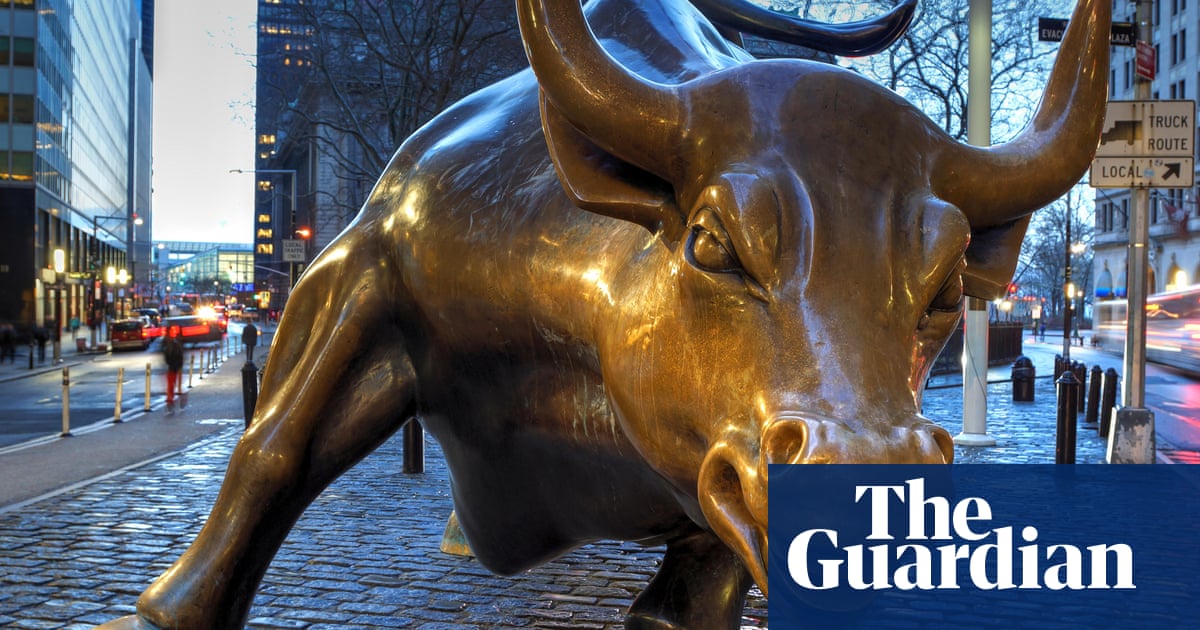Capitalism has a way of confounding its critics. Like one of those fairground punching bags, it pops right back up every time a crisis knocks it down. Friedrich Engels learned this the hard way. “The American crash is superb,” he enthused in a letter to Karl Marx in 1857: this was communism’s big chance. Well, not quite. The US Treasury stepped in, recapitalising banks with its gold reserves; in Britain the Bank Charter Act was suspended to enable the printing of money. The rulebook was torn up and capitalism saved.
So it has always been. Every time we have teetered close to the precipice, big government has swooped down to save the day. The name of the game is “managed capitalism” and it has been a going concern for more than 200 years. This is the theme of John Cassidy’s new book, a marvellously lucid overview of capitalism’s critics, written in good old-fashioned expository prose – if at times a touch workmanlike compared with some of his subjects, such as exhilarating stylists Marx and Carlyle.
Half of the book is given over toMitteleuropa (where we meet Karl Polanyi and Rosa Luxemburg, both of whom are having a bit of a moment these days), India (JC Kumarappa, Gandhi’s crony and pioneer of ecological economics), and Latin America (whose dependency theorists argued that the developed world was scooping up the benefits of rising productivity at the developing world’s expense). Cassidy steers clear of the theoretical thickets of György Lukács and Louis Althusser as well as of the more idiosyncratic anti-capitalist paths taken by Milovan Djilas and José Carlos Mariátegui. Still, it would be churlish to complain about omissions in a book that finds room for 50 potted biographies. This is by far the best primer I have read on the luminaries of the economic left.
Early socialists, Cassidy shows, had little faith in government and equated the state with upper-class corruption. Many of them were sentimentalists or oddballs. The utilitarian socialist William Thompson, for one, thought it was possible to kill the “passion for individual accumulation” simply by substituting cooperation for competition; the humans he describes sound suspiciously like Sims characters. Carlyle’s anti-capitalism (“Mammon-worship is a melancholy creed”), meanwhile, led him to a pro-slavery position.
We owe the left as we know it to Marx and Engels, who railed against financialisation and monopolisation – the “concentration of capital” – and defended planning and public ownership. The collapse of capitalism that they foresaw, however, never came to pass. From their vantage point of 1840, wages had flatlined even as profits had soared over the previous 50 years. This immiseration would surely bring about the system’s downfall. Yet the following century reversed the trend: wages rose faster than profits, and capitalism found new champions among the workers.
Unlike the factory-owning Engels, Keynes was no class traitor: “The class war will find me on the side of the educated bourgeoisie.” His mid-century magic formula, low interest rates and tax-and-spend, led to astonishing growth and stability in the short run. Rachel Reeves could benefit from his counsel for countercyclical spending: “the engine which drives Enterprise is not Thrift but Profit”.
But Keynes, as Paul Sweezy complained, treated the economy as if it were a machine that could be sent for repair. There were “political aspects of full employment” that Keynes had ignored, Sweezy’s Marxist comrade Michał Kalecki elaborated. Low unemployment meant enhanced labour power, so more strikes and higher wages and inflation. A capitalist backlash would ensue, he predicted.
That is precisely what happened in the 70s. Milton Friedman made the case for a “natural rate of unemployment”, by which he meant that more unemployment was needed in order to destroy labour power and push down wages. This confirmed Marx’s observation that a “reserve army” of desperate jobless workers was the best weapon capital had to cripple unionism. Where Nixon could call himself a Keynesian, his successors Carter and then Reagan turned to neoliberalism.
High interest rates and anti-union legislation followed. After a brief mid-century egalitarian blip in which economic growth exceeded the rate of return on capital, the opposite has once again become true in our own gilded age. This was Thomas Piketty’s insight, demonstrated with the sophistication of statistics, in his Capital in the Twenty-First Century.
Sign up toInside Saturday
The only way to get a look behind the scenes of the Saturday magazine. Sign up to get the inside story from our top writers as well as all the must-read articles and columns, delivered to your inbox every weekend.
after newsletter promotion
Cassidy, a staff writer at the New Yorker, is generous in his judgments, and even in his indictments. There is not a single snide remark in these pages. He plays his cards close to his chest, but I suspect he might confess to being a Keynesian. A clue lies in his conclusion – “capitalism can be reformed” – which reminded me of Fredric Jameson’s witticism that it is easier to imagine the end of the world than to imagine the end of capitalism.
Capitalism and Its Critics by John Cassidy is published by Allen Lane (£35). To support the Guardian, order your copy atguardianbookshop.com. Delivery charges may apply.
